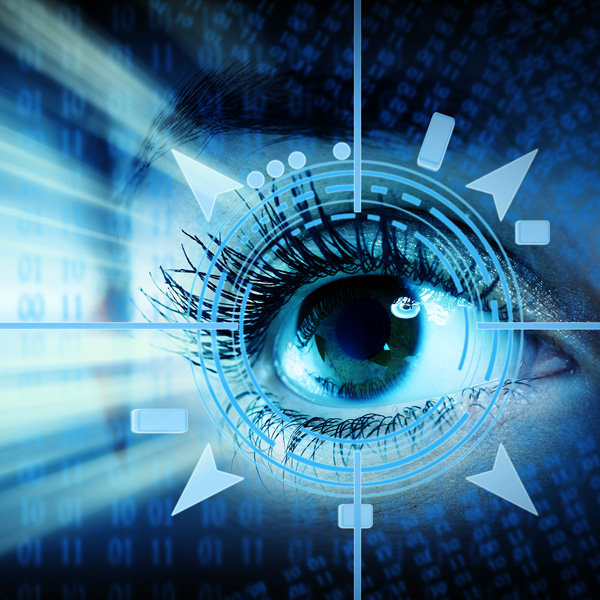
Blue light protection for elderly – is it necessary?
New studies show a connection between blue light and the development of cataracts. In today’s digital era, we are constantly surrounded by screens and modern
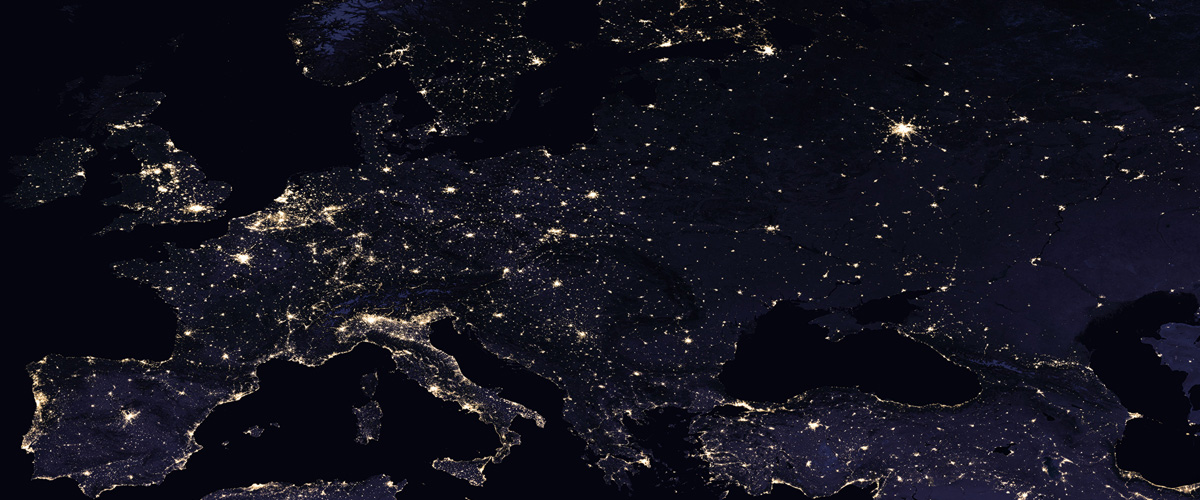
The satellite image above shows the lighting situation in Europe in 2016.
Until recently, we often encountered street lighting in warm, yellowish shades of light. But that is changing more and more. The new LED lamps emit a cold light, with a high proportion in the short-wave (blue/violet) spectrum and with an overall increase in brightness.

The triumphant advance of LEDs has reached the streets worldwide. More and more street lamps are being equipped with light-emitting diodes; also in Germany. Even though the German Energy Agency (Dena) assumes that it will take another 20 to 30 years to retrofit the entire system, there is hardly a municipality that has not already begun to do so. A good 10% of municipalities already have over 80% LED lamps. Especially if a conversion to modern sodium vapor lamps has taken place only a few years ago, as in Hamburg, for example, a quick changeover to LED illuminants is not economical. Because what many forget is that the enormous savings potential of 90% only applies in comparison to incandescent lamps. When compared to the latest generation of sodium vapor lamps, the savings potential is significantly lower.
Despite all the awareness of sustainability, the new lamps are not always popular. The cold white, bright light looks uncomfortable, dazzling and sterile to many. In Rome, the city of love, people are already lamenting the loss of the romance of the night, and in Essen, citizens protested against LED lanterns installed unannounced, under whose light they felt “like in prison.” In Düsseldorf, a citizens’ initiative has been formed to preserve the city’s unique lighting with a large network of gas lanterns. And in Micheldorf in Austria, the LED lamps installed a few months earlier were removed in 2016 following protests from the public.
Disruption of the circadian system can have a major impact on sleep quality and daytime alertness, which in turn impacts wellbeing and safety. It is a bit like having permanent jet lag
Disruption of the circadian system can have a major impact on sleep quality and daytime alertness, which in turn impacts wellbeing and safety. It is a bit like having permanent jet lag.Public Health England - Annual Report 2017
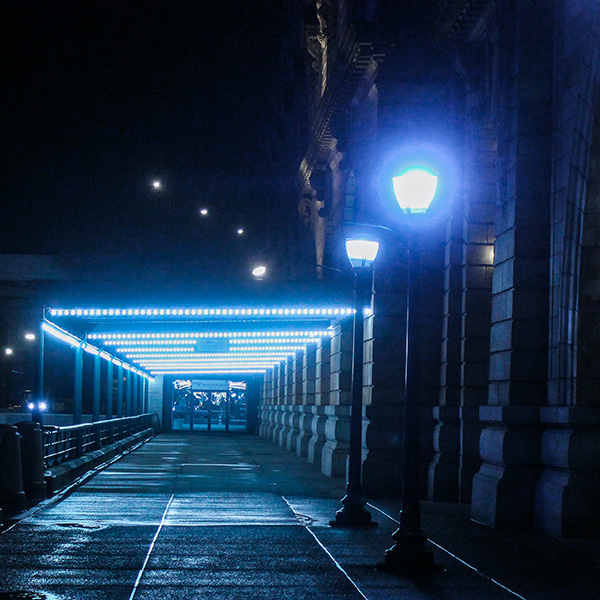
Saving electricity may be above coziness in many places, but what are the effects of strong blue LED light on people and the environment? Back in 2016, the prestigious American Medical Association (AMA) published a warning against high blue content, cool white LED street lighting lamps. Current studies show a direct correlation of brighter street lighting in residential areas with reduced sleep time and quality, as well as less daytime performance and increasing obesity. The reason is the high hormonal effect of LED light, which affects the production of the “sleep hormone” melatonin 5 times more than conventional street lighting.
The AMA’s recommendation is therefore to keep the blue content of the lamps as low as possible by using warm white LEDs, to shield the lamps so that only the street itself is actually illuminated, and to dim the lamps as much as possible outside of peak usage hours.
Public Health England (PHE), a division of the UK Department of Health, also points to these connections in its 2017 annual report, describing the effects of blue-containing light as “permanent jet lag.” In addition, the authority warns of possible damage to the retina caused by the high-energy short-wave light.
Besides the emitted spectrum, however, other aspects can also bring a potential danger. Public Health England’s annual report also criticizes the pulsing of LED lamps at 100 hertz; this flicker could cause discomfort such as migraines, headaches and malaise in sensitive individuals.
Not only sensitive persons, but every participant in road traffic is affected by the resulting stroboscopic effect. Perception of movement is degraded by the intermittent light pulses, PHE warns, and sees this as a danger to road traffic.
The AMA also sees road safety at risk, primarily due to the higher glare potential of LED lamps. In addition, blue light is known to refract more strongly in the eye, resulting in less acute contour perception. It is not for nothing that night driving glasses are tinted yellow to filter out disturbing blue light.
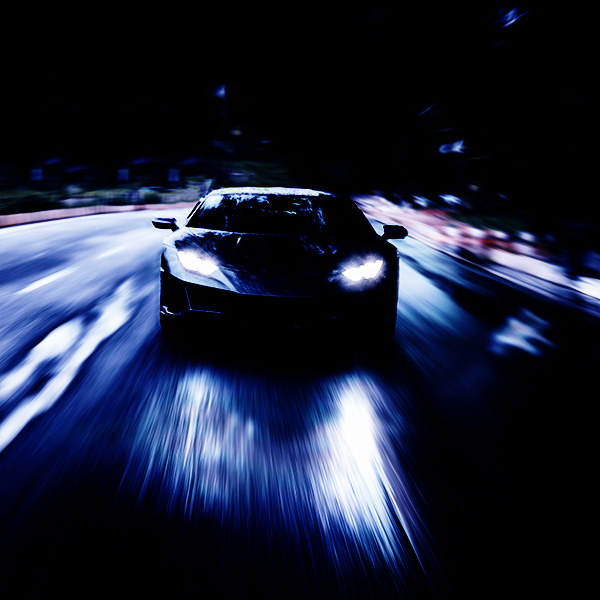

Like any other environmental pollution, light pollution has far-reaching consequences, not only for humans. In their report, the AMA also explicitly points out the negative effects on wildlife. Birds, insects, and fish are far more disoriented by LED lamps than they are by conventional lighting, putting entire populations and the delicate ecological balance at risk.
But not only biologists, also astronomers criticize the loss of the starry sky. As early as 2007, an International Conference was held in La Palma to defend the quality of the night sky and the right to stargazing,
whose participants demanded from political decision-makers that an unpolluted night sky, allowing enjoyment and contemplation of the firmament, should be considered an inalienable human right equal to all other environmental, social and cultural rights.
Satellite data impressively show that today there are hardly any unlit areas left in industrialized countries. But this satellite data can do even more. In scientific studies, they are used to investigate the relationship between nocturnal light exposure and disease.


Because of the hormonal effects of light at night described above, hormone-dependent cancers such as breast cancer are a frequent subject of research. In a well-received study (“Light at night co-distributes with incident breast but not lung cancer in the female population of Israel”), breast cancer incidence was correlated with light exposure at night, as assessed by satellite data.
After accounting for other factors such as income and ethnic constitution of the population, the communities with the highest nighttime light exposure were calculated to have a 73% higher risk of breast cancer. The unchanged lung cancer risk served as a “control value,” since in lung cancer
is assumed not to be hormone-dependent, and therefore the risk should be independent of nocturnal light exposure.
This study is compelling evidence that nighttime light may lead to higher breast cancer rates, but not conclusive proof. Because the high road to medical evidence, the double-blind, placebo-controlled trial, is difficult to conduct with nighttime light (what would one use as a light placebo?), the plausibility of the theory can only be tested by a meta-analysis of existing studies (“Light-at-night, circadian disruption and breast cancer: assessment of existing evidence”).
The following correlations would be required to be found if nocturnal light exposure indeed increases breast cancer risk:
1. female shift workers (night shift) should have a higher risk
2. blind women should have a lower risk
3. sleep duration (as a marker for hours of darkness) should be indirectly proportional to risk
4. the amount of light in the bedroom would have to be directly proportional to the risk
5. population studies would show an association between urban lighting levels and breast cancer risk.
The meta-analysis concludes that all of these assumptions can be demonstrated in medical studies.
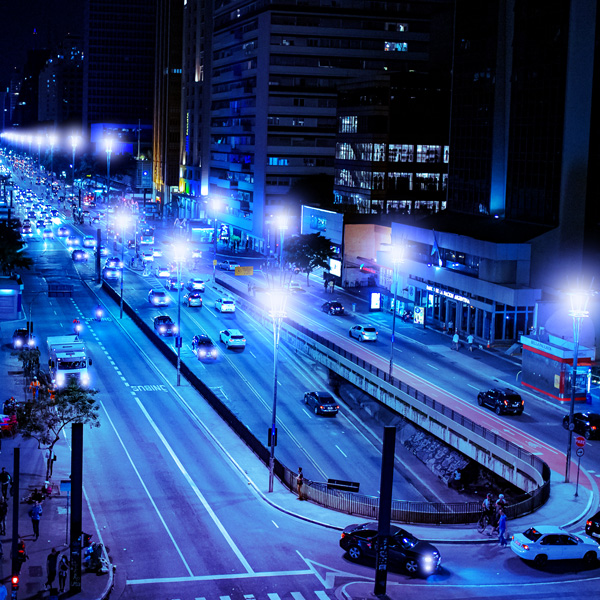
So it seems that the new LED lamps are rightly controversial. Health, safety and environmental protection on the one hand, energy efficiency and European eco-design guidelines on the other. The triumph of LED seems unstoppable, but with the knowledge of the dangers of LED light, you can still react. Almost all of the effects described are due to the short-wave, blue light, and so it makes sense to follow the AMA’s recommendation. As little light as possible with a light source as warm white as possible. Although warm white LEDs still have a peak in the blue range, it is significantly lower compared to cool white lamps. Shielding the lamps not only reduces the risk of glare, but also minimizes the impact on the night sky, not to mention our bedrooms.
Quellen:
New York Times: https://www.nytimes.com/2017/03/27/world/europe/rome-streetlights-led-lights.html
Der Standard: https://derstandard.at/2000043475128/Umstellung-der-Strassenbeleuchtung-sorgt-fuer-Kritik
AMA: https://www.ama-assn.org/ama-adopts-guidance-reduce-harm-high-intensity-street-lights
Public Health England: https://assets.publishing.service.gov.uk/government/uploads/system/uploads/attachment_data/file/690846/CMO_Annual_Report_2017_Health_Impacts_of_All_Pollution_what_do_we_know.pdf
darksky.ch: http://www.darksky.ch/dss/de/category/wissen/politische-vorstoesse/
Light at night co-distributes with incident breast but not lung cancer in the female population of Israel:https://www.ncbi.nlm.nih.gov/pubmed/18293150/
Light-at-night, circadian disruption and breast cancer: assessment of existing evidence: https://www.ncbi.nlm.nih.gov/pmc/articles/PMC2734067/

New studies show a connection between blue light and the development of cataracts. In today’s digital era, we are constantly surrounded by screens and modern

Screen glasses with blue light filters, which are recommended for working on a PC, would allegedly not offer much added value. This is the result

The PRiSMA® BluelightProtect LiTE95 filter glasses can be described as the UNIVERSAL filter with a true 95% blue light filter rate in the 400 to
